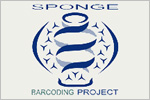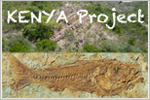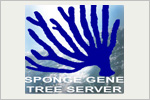2011
Selected publications (ISI listed only, in alphabetical order of first author)
- Bärmann, E.V. & Rössner, G.E. (2011): Dental nomenclature in Ruminantia: towards a standard terminological framework. Mammalian Biology, 76: 762-768.
- Böhme, M., Abdul Aziz, H. Prieto, J., Bachtadse, V. & Schweigert, G. (2011): Bio-magnetostratigraphy and Environment of the oldest Eurasian Hominoid from the Early Miocene of Engelswies (Germany). Journal of Human Evolution. DOI 10.1016/j.jhevol.2011.04.012.
- Böhme, M., Prieto, J., Schneider, S., Hung, N.V., Quang, D.D. & Tran, D.N. (2011): The Cenozoic on-shore basins of Northern Vietnam: biostratigraphy, vertebrate and invertebrate faunas. Journal of Asian Earth Sciences, 40: 672-687.
- Bomfleur, B., Krings, M., Taylor, E.L. & Taylor, T.N. (2011): Macrofossil evidence for pleuromeialean lycophytes from the Triassic of Antarctica. Acta Palaeontologica Polonica, 56: 195–203.
- Bomfleur, B., Taylor, E.L., Taylor, T.N., Serbet, R., Krings, M. & Kerp, H. (2011): Systematics and paleoecology of a new peltaspermalean seed fern from the Triassic polar vegetation of Gondwana. International Journal of Plant Sciences, 172: 807–835.
- Brayard, A., Nützel, A., Kaim, A., Escarguel, G., Hautmann, M., Stephen, D. A., Bylund, K. G., Jenks, J., & Bucher, H. (2011): Gastropod evidence against the Early Triassic Lilliput effect: Reply. Geology, 39: e233.
- Butler, R.J., Brusatte, S.L., Reich, M., Nesbitt, S.J., Schoch, R.R. & Hornung, J.J. (2011): The sail-backed reptile Ctenosauriscus from the latest Early Triassic of Germany and the timing and biogeography of the early archosaur radiation. PLoS ONE, 6: e25693.
- Carballido, J.L., Rauhut, O.W.M., Pol, D. & Salgado, L. (2011): Osteology and phylogenetic relationships of Tehuelchesaurus benitezii (Dinosauria, Sauropoda) from the Upper Jurassic of Patagonia. Zoological Journal of the Linnean Society, 163: 605-662.
- Carnevale, G., Haghfarshi, E., Abbasi, S., Alimohammadian, H. & Reichenbacher, B. (2011): A new species of silverside (Teleostei: Atheriniformes) from the Late Miocene of NW-Iran. Acta Palaeontologica Polonica, 56: 749–756.
- Dohrmann, M., Göcke, C., Janussen, D., Reitner, J., Lüter, C., Wörheide, G. (2011): Systematics and spicule evolution in dictyonal sponges (Hexactinellida: Sceptrulophora) with description of two new species. Zool. J. Linn. Soc. 163, 1003–1025.
- Dohrmann, M., Haen, K.M., Lavrov, D.V., Wörheide, G. (2011): Molecular phylogeny of glass sponges (Porifera, Hexactinellida): increased taxon sampling and inclusion of the mitochondrial protein-coding gene, cytochrome oxidase subunit I. Hydrobiologia online first. DOI: 10.1007/s10750-011-0727-z.
- Erpenbeck, D., Schmitz, J., Churakov, G., Huchon, D., Wörheide, G., Degnan, B.M. (2011): First evidence of miniature transposable elements in sponges (Porifera). Hydrobiologia online first. DOI: 10.1007/s10750-011-0775-4.
- Erpenbeck, D., Voigt, O., Adamski, M., Woodcroft, B., Hooper, J., Wörheide, G., Degnan, B. (2011): NUMTs in the sponge genome reveal conserved transposition mechanisms in metazoans. Molecular Biology and Evolution 28, 1–5.
- Erpenbeck, D., Weier, T., de Voogd, N.J., Wörheide, G., Sutcliffe, P., Todd, J.A., Michel, E. (2011): Insights into the evolution of freshwater sponges (Porifera: Demospongiae: Spongillina): Barcoding and phylogenetic data from Lake Tanganyika endemics indicate multiple invasions and unsettle existing taxonomy. Molecular Phylogenetics and Evolution 61, 231–236.
- Gross, M., Böhme, M. & Prieto, J. (2011): Gratkorn – a benchmark locality for the continental Sarmatian s.str. of the Central Paratethys. International Journal of Earth Sciences, 100: 1895-1913.
- Gründel, J., Kaim, A., Nützel, A. & Little, C.T.S. (2011): Early Jurassic gastropods from England. Palaeontology, 54: 481-510. Payne, J. L. Truebe, S., Nützel, A. & Chang, E. T. (2011): Local and global abundance associated with extinction risk in late Paleozoic and early Mesozoic gastropods. Paleobiology, 37: 616-632.
- Hautmann, M., Bucher, H, Brühwiler, T., Kaim, A. & Nützel, A. (2011): An unusually well preserved mollusc fauna from the Earliest Triassic of South China and its implications for benthic recovery after the end-Permian biotic crisis. Geobios, 44: 71-85.
- Hír, J., Prieto, J. & Ştiuca, E. (2011): A new interpretation of the Miocene rodent faunas from Comăneşti 1 and Tauţ (W-Romania). Geobios, 44: 215-223.
- Hübers, M., Bomfleur, B., Krings, M. & Kerp, H. (2011): An Early Carboniferous leaf-colonizing fungus. Neues Jahrbuch für Geologie und Paläontologie, Abhandlungen, 261: 77–82.
- Jackson, D., Macis, L., Reitner, J., Wörheide, G. (2011): A horizontal gene transfer supported the evolution of an early metazoan biomineralization strategy. BMC Evolutionary Biology 11 (1), 238.
- Kaim, A. & Nützel, A. (2011): Dead bellerophontids walking – The short Mesozoic history of the Bellerophontoidea (Gastropoda). Palaeogeography, Palaeoclimatology, Palaeoecology, 308: 190-199.
- Klaus, S., Böhme, M., Schneider, S., Prieto, J., Phetsomphou, B. (2011): Evidence of the earliest fossil freshwater decapod of Southeast Asia (Crustacea: Decapoda: Brachyura). Raffles Bulletin of Zoology, 59(1): 47-51.
- Krings, M., Dotzler, N. & Taylor, T.N. (2011): Mycoparasitism in Dubiocarpon, a fungal sporocarp from the Carboniferous. Neues Jahrbuch für Geologie und Paläontologie, Abhandlungen, 262: 241–245.
- Krings, M., Dotzler, N., Galtier, J. & Taylor, T.N. (2011): Oldest fossil basidiomycete clamp connections. Mycoscience, 52: 18–23.
- Krings, M., Taylor, T.N. & Dotzler, N. (2011): The fossil record of the Peronosporomycetes (Oomycota). Mycologia, 103: 445–457.
- Krings, M., Taylor, T.N. & White, J.F. (2011): Fungal sporocarps from the Carboniferous: An unusual specimen of Traquairia. Review of Palaeobotany and Palynology, 168: 1–6.
- Krings, M., Taylor, T.N., Dotzler, N. & Galtier, J. (2011): Fungal remains in cordaite (Cordaitales) leaves from the Upper Pennsylvanian of central France. Bulletin of Geosciences, 86: 777–784.
- Krings, M., Taylor, T.N., Taylor, E.L., Dotzler, N. & Walker, C. (2011): Arbuscular mycorrhizal-like fungi in Carboniferous arborescent lycopsids. New Phytologist, 191: 311–314.
- Larroux, C. (2011): Ancient genes reveal our precambrian ancestor. Australasian Science March, 24–27.
- Mayr, C., Försterra, G., Häussermann, V., Wunderlich, A., Grau, J., Zieringer, M. & Altenbach, A.V. (2011): Stable isotope variability in a Chilean food-web: implications for N- and C-cycles. Marine Ecology Progress Series, 428: 89-104.
- Meester, L.D., Tienderen, P. van, Werger, M., Hector, A., Wörheide, G., Niemelä, J., Aguilar, A., Smets, E., Godfray, C., Sutherland, W., Bauhus, J., Courchamp, F., Gandini, G., Koch, M., Maho, Y.L., Manuel, M., Pawlowski, J., Quinnec, E., Owens, I., Keustermans, L. (2011): Challenges for biodiversity research in Europe. Procedia – Social and Behavioral Sciences 13, 83–100.
- Nützel, A., Aghababalou, B. & Senowbari-Daryan, B. (2011): Gastropods from the Norian (Late Triassic) Nayband Formation near Natanz (Iran). Bulletin of Geosciences, doi: 10.3140/bull.geosci.1324.
- Philippe, H., Brinkmann, H., Lavrov, D.V., Littlewood, D.T.J., Manuel, M., Wörheide, G., Baurain, D. (2011): Resolving difficult phylogenetic questions: why more sequences are not enough. PLoS Biol. 9, e1000602.
- Pippèrr, M. (2011): Characterisation of Ottnangian palaeoenvironments in the North Alpine Foreland Basin using benthic foraminifera - a review on the Upper Marine Molasse of Southern Germany. Marine Micropaleontology 79: 80-99.
- Pol, D., Rauhut, O.W.M. & Becerra, M. (2011): A Middle Jurassic heterodontosaurid dinosaur from Patagonia and the evolution of heterodontosaurids. Naturwissenschaften, 98: 369-379.
- Prieto, J., Hoek Ostende, L. W. Van den & Böhme M. (2011): Reappearance of Galerix (Erinaceomorpha, Mammalia) at the limit Middle/Upper Miocene in South Germany: biostratigraphical and paleoecological implications. Contributions to Zoology, 80 (3) 179-189.
- Rahman, A., Fujimura, H., Shinjo, R., Oomori, T. (2011): Extracellular matrix protein in calcified endoskeleton: a potential additive for crystal growth and design. Journal of Crystal Growth 324 (1), 177–183.
- Rahman, A., Oomori, T., Wörheide, G. (2011): Calcite formation in soft coral sclerites is determined by a single reactive extracellular protein. Journal of Biological Chemistry online first, DOI: 0.1074/jbc.M109.070185.
- Rauhut, O.W.M. (2011): Theropod dinosaurs from the Late Jurassic of Tendaguru (Tanzania). Special Papers in Palaeontology, 86: 195-239.
- Reichenbacher, B., Alimohammadian, H., Sabouri, J., Haghfarshi, E., Faridi, M., Abbasi, S., Matzke-Karasz, R., Fellin, M.G., Carnevale, G., Schiller, W., Vasilyan D. and Scharrer, S. (2011). Late Miocene stratigraphy, palaeoecology and palaeogeography of the Tabriz Basin (NW Iran, Eastern Paratethys). Palaeogeography, Palaeoclimatology, Palaeoecology, 311: 1–18. Doi 10.1016/j.palaeo.2011.07.009
- Rivera, A.S., Hammel, J.U., Haen, K.M., Danka, E.S., Cieniewicz, B., Winters, I.P., Posfai, D., Wörheide, G., Lavrov, D.V., Knight, S.W., Hill, M.S., Hill, A.L., Nickel, M. (2011): RNA interference in marine and freshwater sponges: actin knockdown in Tethya wilhelma and Ephydatia muelleri by ingested dsRNA expressing bacteria. BMC Biotechnology 11, 67.
- Sander, P.M., Christian, A., Clauss, M., Fechner, R., Gee, C. T., Griebeler, E.-M., Gunga, H.-C., Hummel, J., Mallison, H., Perry, S. F., Preuschoft, H., Rauhut, O. W. M., Remes, K., Tütken, T., Wings, O. & Witzel, U. (2011): Biology of the sauropod dinosaurs: the evolution of gigantism. Biological Reviews, 86: 117-155.
- Schmitt, S., Deines, P., Behnam, F. & Taylor, M.W. (2011): Chloroflexi bacteria are more diverse, abundant, and specific in high than in low microbial abundance sponges. FEMS Microbiology Ecology, 78:497-510.
- Schmitt, S., Tsai, P., Bell, J., Fromont, J., Ilan, M., Lindquist, N., Perez, T., Rodrigo, A., Schupp, P.J., Vacelet, J., Webster, N., Hentschel, U. & Taylor, M.W. (2011): Assessing the complex sponge microbiota: core, variable, and species-specific bacterial communities in marine sponges. The ISME Journal, epub ahead of print: doi:10.1038/ismej.2011.116.
- Schneider, S. & Prieto, J. (2011): First record of an autochthonous community of fluviatile freshwater molluscs from the Middle/Late Miocene Upper Freshwater Molasse (southern Germany). Archiv für Molluskenkunde, 140: 1-18.
- Schneider, S., Fürsich, F.T. & Werner, W. (2011): Biometric methods for species recognition in Trigonia Bruguière (Bivalvia; Trigoniidae) - A case study from the Upper Jurassic of Western Europe. Paläontologische Zeitschrift, 85: 257-267.
- Schulz-Mirbach T., Heß M., Plath M. (2011): Inner Ear Morphology in the Atlantic Molly Poecilia mexicana—First detailed microanatomical study of the inner ear of a cyprinodontiform species. PLoS ONE 6(11): e27734.
- Schulz-Mirbach, T., Riesch, R., García de León, F.J., Plath, M. (2011): Effects of extreme habitat conditions on otolith morphology – a case study on extremophile livebearing fishes (Poecilia mexicana, P. sulphuraria). Zoology, 114: 321– 334.
- Schwendemann, A.B., Decombeix, A.L., Taylor, T.N., Taylor, E.L. & Krings, M. (2011): Morphological and functional stasis in mycorrhizal root nodules as exhibited by a Triassic conifer. Proceedings of the National Academy of Sciences of the United States of America, 108: 13630–13634.
- Seuss, B., Mapes, R. H., Klug, C. & Nützel, A. (2011): Exceptional cameral deposits in a sublethally injured Carboniferous orthoconic nautiloid from the Buckhorn Asphalt Lagerstätte in Oklahoma, USA. Acta Palaeontologica Polonica, doi:10.4202/app.2011.0008.
- Seuss, B., Titschack, J. Seifert, S., Neubauer, J. & Nützel, A. (2011): Oxygen and carbon stable isotopes from a nautiloid from the middle Pennsylvanian (Late Carboniferous) Lagerstätte ‘Buckhorn Asphalt Quarry’ - primary paleoenvironmental signals versus diagenesis. Palaeogeography, Palaeoclimatology, Palaeoecology, doi: 10.1016/j.palaeo.2011.12.008.
- Taylor, T.N., Krings, M., Dotzler, N. & Galtier, J. (2011): The advantage of thin sections over acetate peels in the study of late Paleozoic fungi and other microorganisms. Palaios, 26: 239–244.
- Teimori, A., Esmaeili, H.R. & Reichenbacher, B. (2011). Aphanius farsicus, a replacement name for A. persicus (Jenkins, 1910) (Teleostei, Cyprinodontidae). Zootaxa, 3096: 53–58.
- Voigt, O., Eichmann, V., Wörheide, G. (2011): First evaluation of mitochondrial DNA as a marker for phylogeographic studies of Calcarea: a case study from Leucetta chagosensis. Hydrobiologia, online early. DOI: 10.1007/s10750-011-0800-7
- Wörheide, G., Vargas, S., Lüter, C., Reitner, J. (2011): Precious coral and rock sponge gardens on the deep aphotic fore-reef of Osprey Reef (Coral Sea, Australia). Coral Reefs 30 (4), 901.





